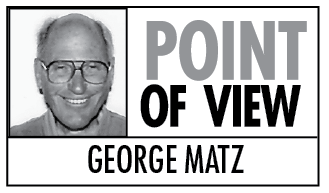Alaska needs better permitting. Resource development project permitting in Alaska is at the proverbial fork in the road. For years the state of Alaska followed a rocky road filled with potholes — a landscape now littered with blown-out tires.
We invested in numerous projects that failed because they were based more on political whim than technical feasibility (Healy Clean Coal Project being the most expensive boondoggle). We supported glittery world-class projects boasted by others that imploded once they ran out of hot air (Pebble Project being most recent).
Our ability to pick winners certainly has been challenged. Our permitting process, which sometimes seems more like rigor mortis than rigorous, is partially to blame.
This problem needs fixing. But the Parnell Administration wants to take us down a new road that could be even bumpier. House Bill 77, introduced by the administration, seeks to “streamline” (i.e., deregulate and centralize) the Department of Natural Resources (DNR) permitting process. HB 77 passed the House last session and is now stalled in the Senate.
Permitting decisions would become even more disconnected than now from serious technical flaws or public objection.
Is there another, better road? I think so. I propose four steps that should:
• Result in a more certain, expedient and less expensive permitting process.
• Create more technical jobs throughout Alaska.
• Uphold our constitutional mandate for natural resource stewardship and being an owner state.
Briefly, these steps are:
1. Internalize costs: Assert that the ultimate purpose of Alaska’s permitting process is to ensure that proposed projects do not impose significant costs/impacts on others, particularly renewable common use resources. If achieved, permitting will have more certainty because opponents will have less defensible arguments.
2. Reconnaissance studies: Rather than have sponsors of large projects complete lengthy and expensive studies before making any decisions on feasibility or mitigation, DNR should promulgate regulations that first require a reconnaissance study which closely evaluates possible fatal flaws and clearly lays out the scope for feasibility studies.
A reconnaissance study should give the permit applicant a good assessment of feasibility, permitting costs/time, and mitigation costs before they decide to spend a bundle on detailed studies.
3. Environmental monitoring: Environmental baseline studies are an expensive and time consuming aspect of most large project permitting. The state could reduce this burden on industry by taking the lead in sponsoring long-term baseline studies. This will improve credibility, result in more compatible protocols and databases, enhance cumulative effects analysis, reduce unnecessary duplication, increase cost-effectiveness, and assure better historical records.
Alaska needs to investigate what Alberta recently initiated. Their report “A World Class Environmental Monitoring, Evaluation and Reporting System for Alberta” (http://environment.alberta.ca/03379.html ) describes how Alberta plans to achieve “accurate, trustworthy and useful data and information to inform the work of policymakers, regulators, research organizations and others” regarding existing environmental conditions and impacts from resource development. A system like this in Alaska also will create long-term environmental monitoring jobs throughout the state.
4. Percent for science: If Alaska were to commit to comprehensive, long-term environmental monitoring, funding would be an issue, as in Alberta. I suggest a percent-fo-science approach similar to Alaska’s long-standing percent-for-arts program where 1 percent of the capital construction costs of public buildings are designated for artwork.
In this case, 1 percent of the state capital budget for resource management, energy and transportation projects would be set aside for long-term environmental baseline monitoring. Think of this as a general user fee. A science council would direct how money is spent by agencies or non-profits, approve protocols and assure that results are integrated into a publicly accessible database.
Seeing in the rear view mirror all the uneconomic projects and studies that Alaska has sponsored over the years should be reason enough to look for new direction. Perhaps the start is to have an open discussion on just what should project permitting really expect to accomplish?
George Matz, who lives in Fritz Creek, has experience in the private, public and nonprofit sectors. Before retiring from the state he worked as a budget, policy and project analyst as well as special assistant and legislative aide.


